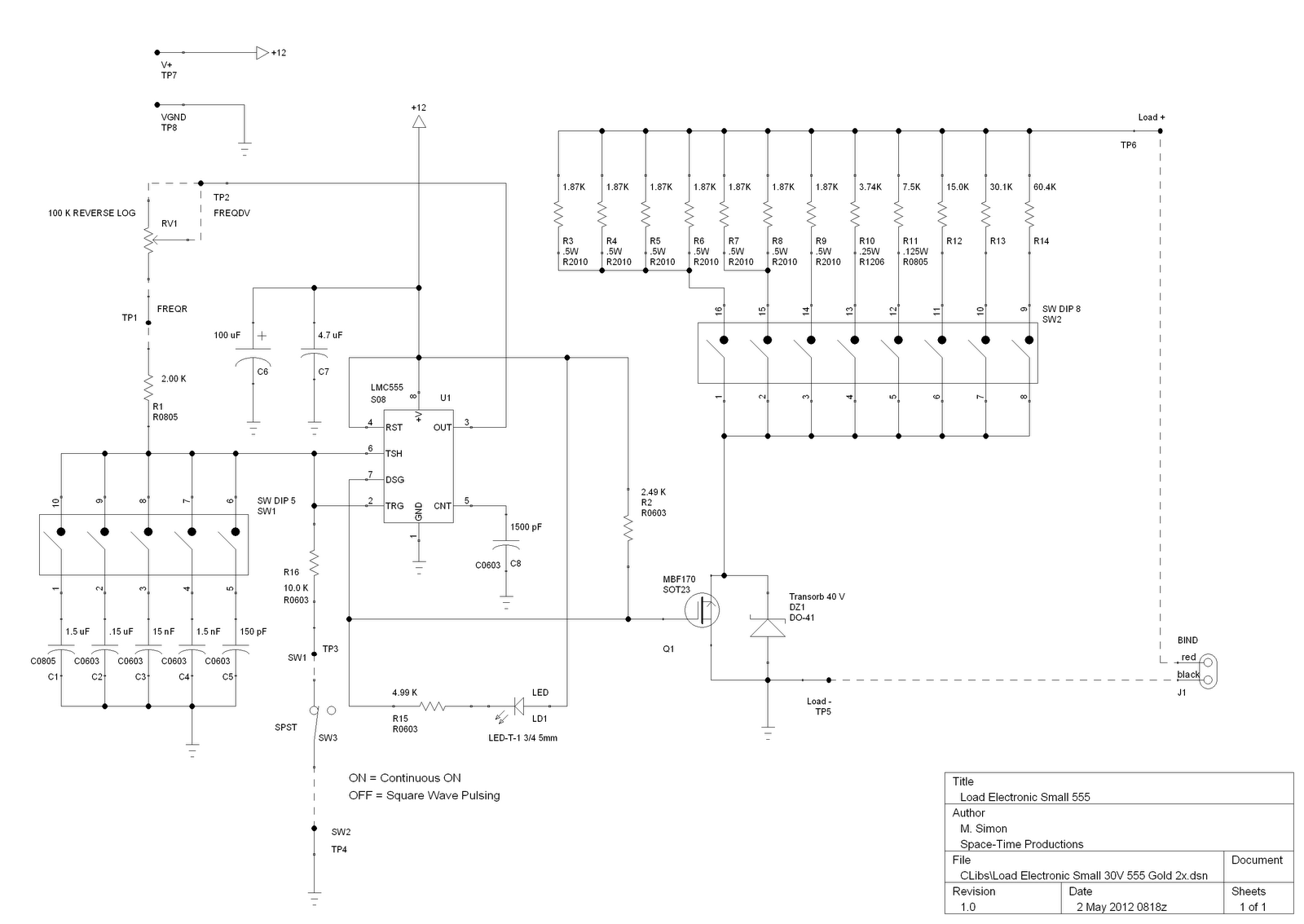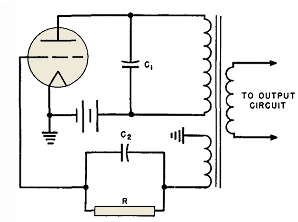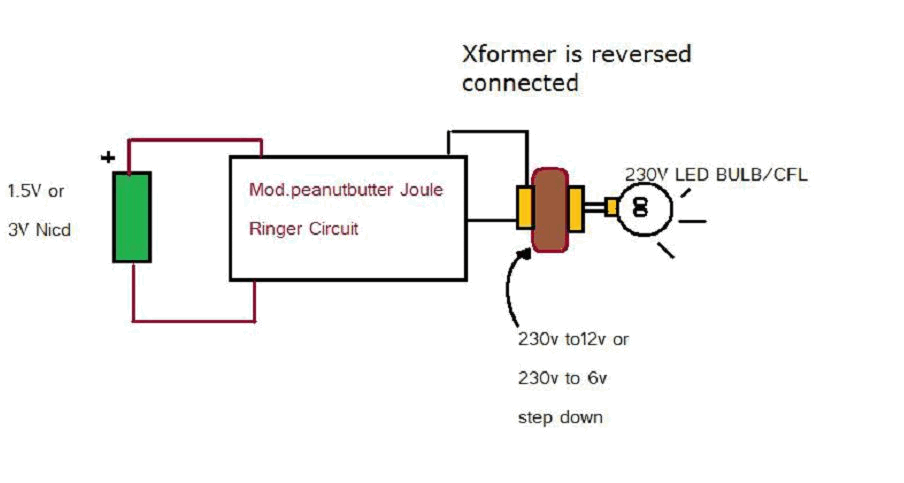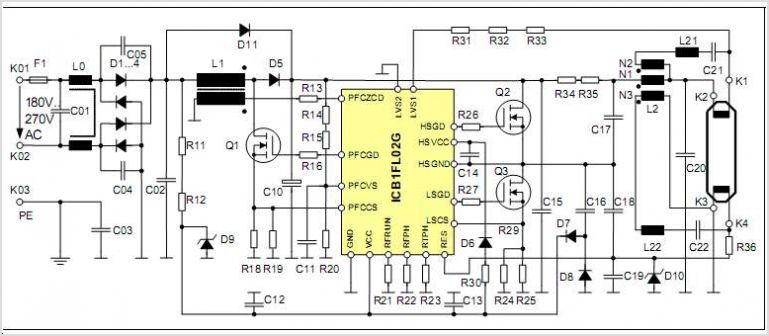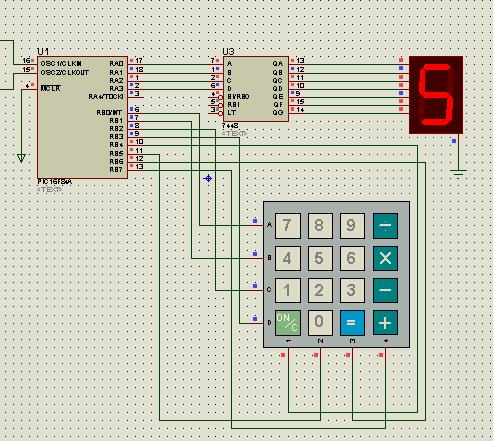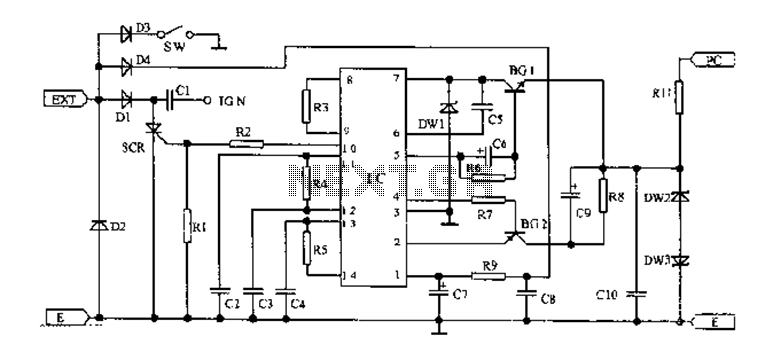
14 Watt Compact Fluorescent Electronic Ballast
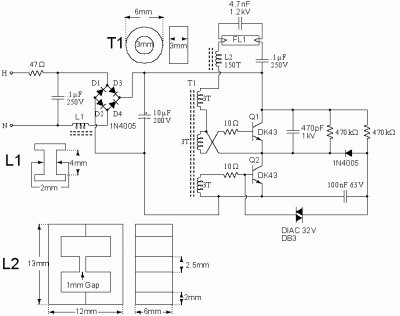
The following circuit illustrates a 14 Watt Compact Fluorescent Electronic Ballast Circuit Diagram. Features: it is similar to a 16 Watt circuit, 14 Watt.
The 14 Watt Compact Fluorescent Electronic Ballast Circuit is designed to efficiently drive compact fluorescent lamps (CFLs) with a power output of 14 Watts. This circuit is crucial for providing the necessary high-frequency signal that enables the ignition and operation of CFLs, ensuring optimal performance and energy efficiency.
The circuit typically comprises several key components: a transformer, a rectifier, a capacitor, and a control circuit. The transformer steps up the voltage to the required levels for lamp ignition, while the rectifier converts the AC input into DC. The capacitor smooths the output, providing a stable voltage to the lamp.
In operation, the electronic ballast initiates the lamp by applying a high voltage pulse to the electrodes, allowing ionization of the gas within the lamp. Once the lamp is ignited, the ballast regulates the current flowing through the lamp to maintain a steady light output, preventing flickering and extending the lifespan of the lamp.
The design of this ballast is similar to that of a 16 Watt circuit, allowing for compatibility with various lamp types while ensuring efficient energy use. The electronic ballast not only improves lighting quality but also reduces energy consumption compared to traditional magnetic ballasts, making it a preferred choice in modern lighting applications. Additionally, the compact design of the circuit allows for easy integration into various fixtures, enhancing versatility in installation.The following circuit shows about 14 Watt Compact Fluorescent Electronic Ballast Circuit Diagram. Features: similar to a 16 Watt circuit, 14 Watt .. 🔗 External reference
The 14 Watt Compact Fluorescent Electronic Ballast Circuit is designed to efficiently drive compact fluorescent lamps (CFLs) with a power output of 14 Watts. This circuit is crucial for providing the necessary high-frequency signal that enables the ignition and operation of CFLs, ensuring optimal performance and energy efficiency.
The circuit typically comprises several key components: a transformer, a rectifier, a capacitor, and a control circuit. The transformer steps up the voltage to the required levels for lamp ignition, while the rectifier converts the AC input into DC. The capacitor smooths the output, providing a stable voltage to the lamp.
In operation, the electronic ballast initiates the lamp by applying a high voltage pulse to the electrodes, allowing ionization of the gas within the lamp. Once the lamp is ignited, the ballast regulates the current flowing through the lamp to maintain a steady light output, preventing flickering and extending the lifespan of the lamp.
The design of this ballast is similar to that of a 16 Watt circuit, allowing for compatibility with various lamp types while ensuring efficient energy use. The electronic ballast not only improves lighting quality but also reduces energy consumption compared to traditional magnetic ballasts, making it a preferred choice in modern lighting applications. Additionally, the compact design of the circuit allows for easy integration into various fixtures, enhancing versatility in installation.The following circuit shows about 14 Watt Compact Fluorescent Electronic Ballast Circuit Diagram. Features: similar to a 16 Watt circuit, 14 Watt .. 🔗 External reference
